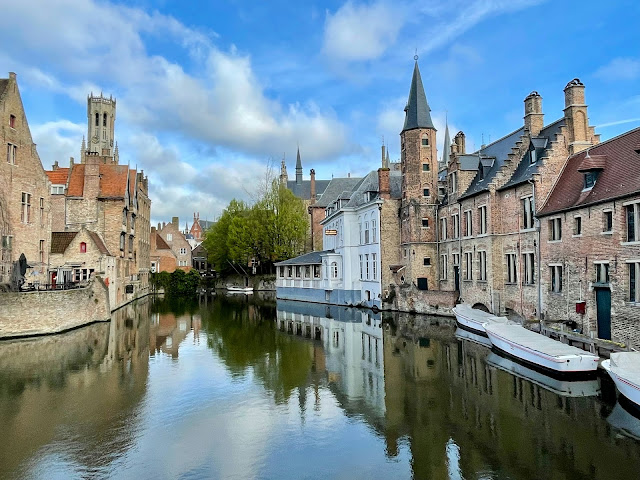Mount Ararat: A Journey to the Peak of Turkey's Highest Mountain
Mount Ararat is a majestic mountain that dominates the skyline of eastern Turkey. It is the highest peak in the country, rising to 5,137 meters (16,854 feet) above sea level. It is also a mountain of great historical and cultural significance, as it is believed to be the resting place of Noah's Ark according to the Bible and the Quran.
In this blog post, I will share my experience of climbing Mount Ararat with a group of fellow adventurers. We embarked on a four-day trek that challenged us physically and mentally, but also rewarded us with stunning views and unforgettable memories.
Day 1: Arrival and Acclimatization
We arrived at the town of Dogubayazit, the nearest settlement to Mount Ararat, after a long bus ride from Ankara. We checked into our hotel and met our guide, who briefed us on the itinerary and the safety precautions. He also gave us some tips on how to cope with the high altitude and the cold weather.
We spent the rest of the day exploring the town and its surroundings. We visited the Ishak Pasha Palace, a 17th-century Ottoman fortress that overlooks the valley. We also saw the Ahmediye Mosque, a beautiful example of Islamic architecture. We enjoyed some local delicacies, such as kofte (meatballs), ayran (yogurt drink), and baklava (sweet pastry).
We went to bed early, as we had to wake up at 4 a.m. the next day to start our trek.
Day 2: Ascent to Base Camp
We woke up before dawn and packed our bags. We drove to the village of Eli, where we met our porters and mules. They helped us load our equipment and supplies onto the animals. We then began our hike along a dirt road that gradually ascended towards the mountain.
The first part of the hike was relatively easy, as we passed through green fields and orchards. We saw some shepherds with their flocks of sheep and goats. We also encountered some local children who greeted us with smiles and curiosity.
As we climbed higher, the scenery changed dramatically. The vegetation became sparse and rocky. The air became thinner and colder. We felt our breaths becoming heavier and our steps slower. We took frequent breaks to drink water and snack on dried fruits and nuts.
After about six hours of hiking, we reached our base camp at 3,200 meters (10,500 feet). We pitched our tents and rested for a while. We then had a hearty dinner of soup, bread, cheese, and tea. We admired the sunset over the mountain and the stars in the clear sky. We went to sleep early, as we had another long day ahead of us.
Day 3: Ascent to High Camp
We woke up at 6 a.m. and had a quick breakfast of oatmeal, eggs, and coffee. We packed our bags again and left some of our belongings at the base camp. We only carried what we needed for the summit attempt.
We resumed our hike along a steep trail that zigzagged up the mountain. The terrain was more challenging than the previous day, as we encountered snow patches, loose rocks, and ice fields. We used our crampons, ice axes, and ropes to navigate safely.
We also faced strong winds that blew dust and snow into our faces. We covered our mouths and noses with scarves and goggles to protect ourselves. We communicated with each other through hand signals and shouts.
After about five hours of hiking, we reached our high camp at 4,200 meters (13,800 feet). We set up our tents on a flat spot near a glacier. We had a light lunch of sandwiches, cookies, and juice. We then rested for the rest of the day, as we had to wake up at midnight for the final push to the summit.
Day 4: Summit Day
The night was restless as we tried to catch some sleep before the midnight wake-up call. At 12 a.m., we gathered in the darkness, layered in warm clothing and equipped with headlamps. The air was chilly, and the silence of the mountain enveloped us.
Under the guidance of our experienced mountaineering guide, we set off towards the summit. Each step felt arduous as we ascended higher into the thin air. The path was steep and demanding, requiring both physical endurance and mental fortitude.
As we progressed, the sky began to lighten, revealing a breathtaking panorama of snow-capped peaks and the vast expanse below. The terrain became steeper, and we relied on ropes and harnesses for added safety. Our team moved together, offering words of encouragement and support along the way.
Hours passed, and fatigue started to set in. The lack of oxygen made every breath labored, but we persevered, driven by the desire to conquer the peak. Step by step, we pushed ourselves forward, overcoming the challenges the mountain presented.
Finally, after a grueling ascent, we reached the summit of Mount Ararat. A surge of exhilaration washed over us as we stood at the highest point in Turkey. The feeling of accomplishment mingled with awe as we took in the awe-inspiring view from the summit.
We captured the moment with photographs, congratulating each other on our achievement. But amidst the celebration, we were humbled by the sheer power and beauty of nature. The wind whipped around us, a reminder of the mountain's untamed spirit.
Reluctantly, we began our descent, mindful of the need to return safely. The journey back was challenging as well, navigating tricky sections and carefully descending steep slopes. We retraced our steps, passing through high camp and base camp, gradually descending to lower altitudes.
At last, we reached the village of Eli, where our adventure had begun. Fatigued but content, we bid farewell to the mountain that had tested our limits and rewarded us with unforgettable memories. We celebrated our achievement with a hearty meal and shared stories of our journey.
Climbing Mount Ararat was an extraordinary experience that pushed us beyond our comfort zones and brought us closer to nature's grandeur. It required physical strength, mental resilience, and a deep appreciation for the power and beauty of the mountains.
Beyond the personal triumph of reaching the summit, the journey fostered camaraderie among our group of adventurers. We relied on each other for support, encouragement, and shared moments of joy and exhaustion.
Mount Ararat revealed its majestic allure and challenged us in ways we hadn't anticipated. It reminded us of our place in the vastness of the natural world and the importance of preserving these awe-inspiring landscapes for future generations.
As we left Dogubayazit, we carried with us not only memories of our remarkable ascent but also a newfound respect for the rugged beauty of Mount Ararat. It will forever hold a special place in our hearts as a symbol of human perseverance and the indomitable spirit of exploration.
FAQs (Frequently Asked Questions):
Is climbing Mount Ararat suitable for beginners?
Climbing Mount Ararat requires a moderate to high level of fitness and previous hiking experience. While it is possible for beginners to attempt the climb with proper preparation and guidance from experienced guides, it is recommended to have some prior mountaineering experience and physical training.
What is the best time to climb Mount Ararat?
The ideal time to climb Mount Ararat is during the summer months, from June to September when the weather is relatively stable and the snow has melted at lower altitudes. However, weather conditions can still be unpredictable, so it is essential to check the forecast and consult with local guides before planning your ascent.
Are there any age restrictions for climbing Mount Ararat?
There are no strict age restrictions for climbing Mount Ararat; however, participants should be in good health and physically fit. It is advisable to consult with a healthcare professional before attempting the climb, especially for individuals with pre-existing medical conditions or older adults.
Do I need specialized equipment for climbing Mount Ararat?
Yes, climbing Mount Ararat requires proper mountaineering equipment such as crampons, ice axes, harnesses, and ropes. It is recommended to rent or purchase these items before the expedition. Additionally, warm clothing, sturdy hiking boots, and a reliable backpack are essential for a successful climb.
Is a permit required to climb Mount Ararat?
Yes, climbers are required to obtain a permit from the Turkish authorities to climb Mount Ararat. It is important to plan in advance and apply for the necessary permits through authorized agencies or tour operators.
What are the safety considerations while climbing Mount Ararat?
Safety is paramount when undertaking a climb of this nature. It is crucial to hire experienced guides who are familiar with the mountain, follow their instructions, and adhere to safety protocols. Acclimatization, proper hydration, and monitoring weather conditions are essential for a safe and successful ascent.
Are there accommodation options available during the climb?
Yes, there are accommodation options available in the town of Dogubayazit, which serves as the base for Mount Ararat expeditions. From budget guesthouses to hotels, there are various choices to suit different preferences. During the trek, climbers usually camp at designated base camps or high camps along the route.
Can Mount Ararat be climbed without a guide?
While it is technically possible to attempt a climb without a guide, it is highly recommended to hire an experienced guide or join a reputable tour operator. They provide valuable expertise, ensure safety measures are in place, and enhance the overall experience with their knowledge of the terrain and local conditions.
Can I see Noah's Ark on Mount Ararat?
The belief that Noah's Ark rests on Mount Ararat is based on religious texts; however, no verifiable evidence has been found to support this claim. Explorations and expeditions have taken place over the years, but no conclusive evidence of the ark's existence has been discovered.
Are there alternative routes or shorter hikes available on Mount Ararat?
Mount Ararat offers various routes and hiking options for trekkers of different skill levels. Apart from the standard route, there are alternative paths and shorter hikes that explore different sections of the mountain, allowing for a variety of experiences based on individual preferences and time constraints.
Turkey Unleashed: A Traveler's Guide to Embracing Turkish Culture, Cuisine and Etiquette





Comments
Post a Comment
It's easy to leave a comment on our blog – anyone with a Google account can do it. We invite you to share your experiences by leaving a comment as well.